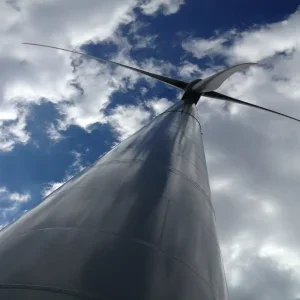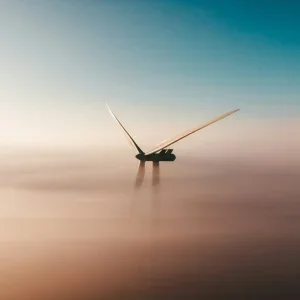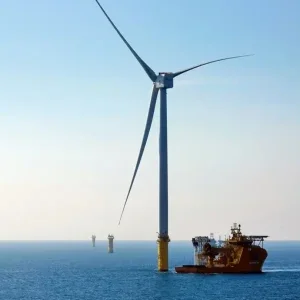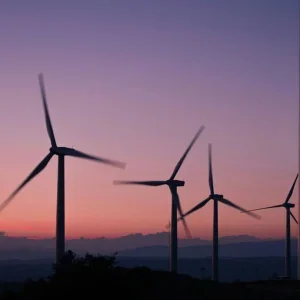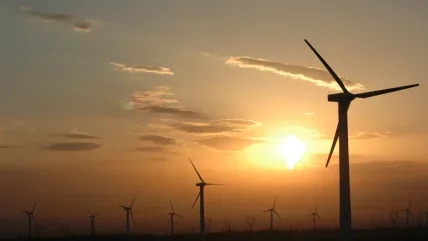
In February 2005, the Chinese government passed the Renewable Energy Law. Leaf through the document’s clauses – all 32 of them – and your mind may begin to wander. Even for a regime famous for the richness of its legalese, after all, this is not legislation with readability in mind. Beginning with the promise to promote the “development and utilisation” of renewable energy, the drafters then went on to explore everything from vocational training to grid synchronisation in eye-closing detail.
For all the brain-churning language, however, this half-forgotten law has gone on to create something special – especially when it comes to wind energy. Consider the statistics. In 2006, the year after the Renewable Energy Law was passed, the People’s Republic boasted a mere 2,599MW of wind energy capacity. In 2021, that figure rose to over 328,000MW – with China now responsible for an incredible 70% of new installed capacity. To put that into comparison, Beijing’s main geopolitical rival, the US, is only managing 14%. No wonder Ilaria Mazzocco, a fellow at the Center for Strategic and International Studies, characterises the 2005 policy as a “pivotal moment” in China’s energy transformation.
Yet, if the Renewable Energy Law is clearly vital to sparking China’s wind energy boom, there are plenty of other ingredients too. That’s clear, for instance, if you examine the country’s propitious physical geography, or the way that national and regional governments have developed infrastructure to ensure energy reaches the towns and factories that need it. Nor is China’s wind odyssey finished just yet. From vested interests to inefficient equipment, there’s still plenty for the country’s bureaucrats to think about. All the same, it’s hard to argue with the numbers – and if things continue as they have, the Renewable Energy Law could soon be seen as the starting pistol for a Chinese Century in wind innovation.
China’s energy boom
Seen in a certain light, the Renewable Energy Law was only tangentially about energy. Listen to the experts, however, and you get the sense that it was more about economics – and the looming threat to China from across the Pacific Ocean. “If you look at Chinese policies, they will try to closely replicate those of the US market,” is how Shashi Barla, director and head of research at the Brinckmann consultancy, puts it. “And once the US started gaining momentum, that’s when these policies were introduced.” If nothing else, this argument is clear via a close reading of the 2005 law itself. As Barla notes, a crucial part of the legislation required Western turbine manufacturers eager to do business in the country to build their towers in the Middle Kingdom, fostering what he describes as “local” industrialisation.
Fair enough: with 85% of the pre-2005 wind energy market dominated by European companies, it makes sense that China would want to get in on the action. Yet, if Barla argues that the country’s progress since then is fundamentally down to a “supply push” from central government, Beijing would surely have struggled to conjure a native wind sector by diktat alone. Rather, that prod from the bureaucrats dovetailed with a range of other factors, all of which meant that their efforts landed on fertile ground.
70%
China’s contribution to global new installed wind energy capacity in 2021.
Global Wind Energy Council
That’s true, for instance, in terms of China’s geography. Though far from the windiest nation on Earth, the desolate plains to the country’s north and west, respectively – bordering Mongolia and the Himalayas – mean that there’s suitable land for major wind farms. And if wind speeds on the Tibetan Plateau can reach over 8.5m/s, the situation is even more auspicious off China’s coasts. In the East China Sea, to give one example, experts sometimes register gusts of up to 16m/s.
14%
The US’s contribution to global new installed wind energy capacity in 2021.
Global Wind Energy Council
Then there’s the question of Chinese demand. In 2021 alone, homes and offices saw the country’s power demand jump by over 10%. “China has had a booming demand for energy,” emphasises Mazzocco. “And so, building any kind of extra capacity – whether it be coal or wind – is something that the Chinese government has pursued very actively.”
Of course, as Mazzocco implies, there’s no real reason why Chinese electricity needs to be supplied from wind rather than less salubrious sources, with the government approving two coal-fired power stations every single week in 2022. However, examine the legislation and you can once again appreciate just how influential the 2005 law truly was. Among other things, it mandated the creation of national wind energy targets. Just as importantly, it obliged the power grid to purchase all energy derived from sustainable sources.
Leading the way on wind
You’ll soon be able to see the fruits of these policies if you visit the southern Chinese city of Chaozhou. Just up the Han River estuary from the Straits of Taiwan, officials are planning what’s already being heralded as the world’s largest wind farm. Operating around 100 miles from shore, the site will boast thousands of wind turbines, an operation so vast that it could one day power the equivalent of the whole of Norway. Nor is it by any means alone. Asked to give a specific example of the kind of ambitious wind project China is working on, Barla is at a loss. As he says, there are around 3,000 wind farms being built globally right now, with half of those happening in China. In parts of the country, moreover, Barla notes that companies are regularly building projects hitting the 10GW mark. “Nowhere in the world will you find that kind of large basis,” he says.
But if in many ways it’s an anonymous foot soldier in a vast army of construction, the planned location of the Chaozhou farm does perhaps hint at how the Chinese wind sector has developed. With 94% of the country’s population living in its eastern third – and many clinging closely to the fertile and prosperous coasts – it makes sense that energy companies would build where the people are. That’s shadowed, moreover, by far better infrastructure from inland sites. There was a time, Barla explains, that operators struggled to get electricity from remote farms in, say, Inner Mongolia, to seaside cities like Shanghai. But in the time since 2014, Beijing invested billions in highvoltage lines, which Barla calls “best-in-class” and now encompass a dense web of electric connectivity. That’s shadowed by regional support. In Guangdong province, for example, officials are offering energy firms subsidies up to ¥1,500 ($218) for every kilowatt of capacity they build. At the same time, developers have been promised that they’ll be able to sell electricity at the same price as traditional energy providers – ensuring wind can compete with coal or nuclear power.
Not that China’s burgeoning wind sector has always got its own way. Especially in provinces with strong coal mining constituencies, officials have sometimes been accused of discouraging the transition to cleaner alternatives. In 2017, to give one example, wind enthusiasts in Gansu accused the local government of cutting production quotas for wind farms, ensuring that coal stations could keep ahead. And given China’s coal sectors tend to be found in remote inland regions of the country anyway, bureaucrats will inevitably have to contend with the social costs of deindustrialisation when wind finally does take the top spot. “Once it all gets shut down,” says Mazzocco of China’s coal industry, “these areas might become even more impoverished”.
Impact on the rest of the world
That’s shadowed by broader questions too. Particularly in light of the more rigorous industrial strategies being floated in Washington and Brussels, Mazzocco says it’s unclear how China’s wind turbine manufacturers might ultimately be affected. But if a lack of European expertise and investment would surely dampen China’s wind-built dynamism, a trade war could be equally damaging to Beijing’s enemies too, not least given Chinese factories now pump out generators and blades vital to wind turbines everywhere. “That creates a very high dependence on the supply chain,” Mazzocco explains. “It does put some of those component manufacturers in Europe and elsewhere at a disadvantage.”
With the prospect of mutually assured destruction forestalling any sudden break for the moment, Barla is confident that China’s wind sector boom will only continue. With both central and regional governments “proactively imposing” energy targets, he adds that the authoritarian nature of the Chinese state can also get things done in a way democratic politicians can only dream about. Where residents in France or Britain can drag prospective projects through the judicial ringer, Barla points out that the average Chinese citizen is not “a big barrier” to new wind development. Considering the country’s wind sector is predicted to reach 1,000GW by the middle of this century, that if anything feels like an understatement.


